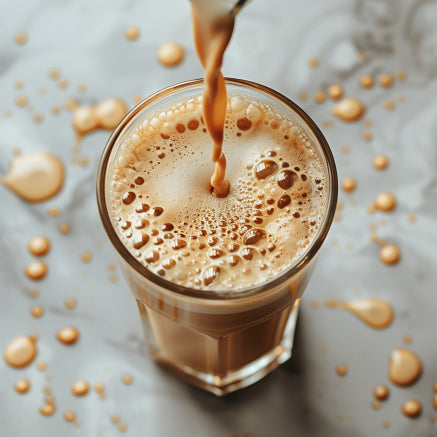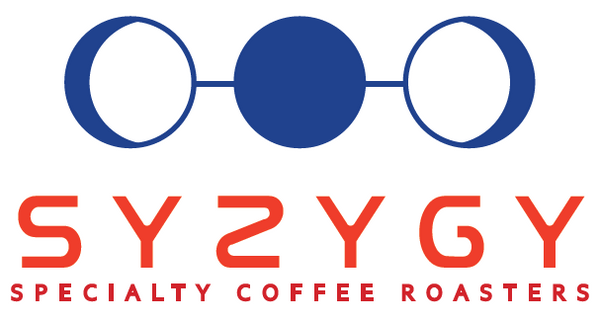
Cold Brew Coffee: A Guide to Safety and Exquisite Flavor
Share
Cold brew coffee, a beloved ritual for many, offers a unique and smoother caffeine experience compared to its hot brewed counterparts. This brewing method involves steeping coarsely ground coffee beans in cold water for an extended period, typically 12 to 24 hours. While it's famed for its rich flavor and reduced acidity, the cold brewing process presents unique safety and quality considerations that aficionados and novices alike should not overlook.
HINT: 24 hours is OVERKILL!
The Science of Cold Brew Safety
Recent research from the University of Georgia has shed light on the microbiological safety of cold brew coffee, revealing both risks and benefits. The study found that some cold brew concoctions might harbor acid-resistant microorganisms, including harmful bacteria that could pose health risks. Conversely, beneficial lactic acid bacteria, known for their probiotic properties, were also identified in certain samples, suggesting that with proper brewing techniques, cold brew could offer not just taste but health benefits.
Ensuring Microbial Safety in Your Cold Brew
To mitigate health risks, it's crucial to focus on the cleanliness of your brewing environment and the quality of your ingredients. Here are some steps to ensure the microbial safety of your cold brew:
- Use Filtered Water: Starting with high-quality, filtered water minimizes the risk of contamination and ensures the purity of your brew.
- Select High-Quality Coffee Beans: Opt for fresh, specialty-grade coffee beans, like those offered by Syzygy Coffee, to ensure your cold brew is not only delicious but safe.
- Sterilize Brewing Equipment: Before brewing, thoroughly clean and sanitize your equipment—grinders, containers, filters—to eliminate potential bacterial growth.
- Control Brewing Time and Temperature: Keeping your brewing container in a cool, controlled environment and adhering to recommended brewing times reduces the risk of harmful bacterial growth.
Elevating Cold Brew Flavor
Beyond safety, the essence of cold brew lies in its rich, smooth flavor profile. Achieving the perfect balance requires attention to several key factors:
The Right Coffee-to-Water Ratio
A general guideline is a 1:8 coffee-to-water ratio, but this can vary based on personal preference and the specific beans used. Experimenting with ratios can help you find the perfect strength and flavor intensity for your cold brew.
Optimal Brewing Time
While the typical range is 12 to 24 hours, brewing beyond 24 hours can extract bitter compounds, whereas too short a brew might result in a weak flavor. Finding the sweet spot is key to unlocking the full flavor potential of your coffee.
Choice of Coffee
The coffee bean's origin, roast level, and freshness play pivotal roles in the flavor profile of your cold brew. Syzygy Coffee's curated selection of beans, from light to dark roasts, offers a spectrum of flavors suitable for cold brewing. Experimenting with different beans can lead to delightful discoveries.
Filtration Technique
The method used to filter your cold brew can affect its clarity and taste. Paper filters offer a cleaner, more refined cup, while metal filters allow more oils and fine particles through, contributing to a fuller body.
The Recipe
- Beans: Grab your favorite coffee beans. Freshness counts, so grind fresh, and make sure they were recently roasted. You can get the best beans here.
- Grind: Go for a medium coarse grind. It's like the Goldilocks of coffee grounds – not too fine, not too chunky.
- Ratio: Stick to a 1:8 coffee-to-water ratio. That’s one part coffee to eight parts room temperature water.
- Bloom and Stir: Start by adding just enough water to wet the grounds. Let them bloom (coffee talk for letting the grounds puff up) for a minute, then stir. This little step makes sure all the flavors get in on the action.
- The Full Monty: Pour in the rest of the water and give it another gentle stir.
- Chill Time: Tuck your brew into the fridge. Here's the kicker – you only need about 3 hours. More than that and you’re inviting bitterness to the party, and nobody wants that.
- Filtering: Whether you’re team French press, a Toddy system enthusiast, or have another method, it's all about filtering out those grounds to get a clean, clear brew.
Common Mistakes to Avoid
Now, let's save you from some cold brew faux pas. For starters, over-steeping is a big no-no. Remember, more than 3-4 hours is overkill. Then there's the grind – too fine, and you're in bitterness city; too coarse, and you miss out on the flavor. Water temperature matters too – room temp brings out the best in your beans. And don’t forget the ratio! A balanced 1:8 is your ticket to cold brew paradise.
Wrap-Up
Creating cold brew at home is an adventure in flavors and a nod to your coffee passion. It’s not just about beating the heat; it’s about enjoying a beautifully crafted cup that’s just right for you. So why not give it a go? Your perfect cold brew is just a few simple steps away.
Storage and Serving Recommendations
Proper storage is crucial for maintaining the freshness and safety of your cold brew. Once brewed, store your cold brew in a sealed container in the refrigerator for up to two weeks. Serve chilled, over ice, or diluted with water or milk to taste. Adding flavors such as vanilla, cinnamon, or chicory can further enhance your cold brew experience.
Conclusion: A Journey to the Perfect Cold Brew
Crafting the perfect cold brew coffee is both an art and a science, blending meticulous preparation with personal taste. By prioritizing safety through clean brewing practices and exploring the vast landscape of flavors that coffee offers, you can elevate your cold brew experience to new heights. Syzygy Coffee is your partner in this journey, offering a selection of premium beans that promise to transform your cold brew into an extraordinary beverage.
Remember, the key to a delightful cold brew lies not just in the ingredients but in the care and creativity you bring to the brewing process. Happy brewing!
